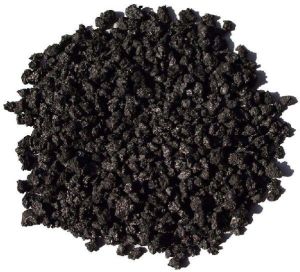
synthetic graphite
A process to make synthetic graphite was invented by Edward Goodrich Acheson (1856–1931). In the mid-1890s, Acheson discovered that overheating carborundum, which he is also credited with discovering, produced almost pure graphite. While studying the effects of high temperature on carborundum, he had found that silicon vaporizes at about 4,150 °C (7,500 °F), leaving behind graphitic carbon. This graphite was another major discovery for him, and it became extremely valuable and helpful as a lubricant. In 1896 Acheson received a patent for his method of synthesizing graphite, and in 1897 started commercial production. The Acheson Graphite Co. was formed in 1899. Acheson also developed a variety of colloidal graphite products including Oildag and Aquadag. These were later manufactured by the Acheson Colloids Co.
...more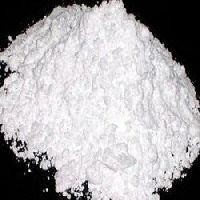
steatite powder
Soapstone (also known as steatite, or soaprock) is a talc–schist, which is a type of metamorphic rock. It is largely composed of the mineral talc and is thus rich in magnesium.Soapstone has been used in India for centuries as a medium for carving. Welders and fabricators use soapstone as a marker due to its resistance to heat; it remains visible when heat is applied. It has also been used for many years by seamstresses, carpenters, and other craftsmen as a marking tool because its marks are visible and not permanent. Soapstone is also widely used in the cosmetics industry as talcum in various products. Soapstone can be used to create molds for casting objects from soft metals, such as pewter or silver. The soft stone is easily carved and is not degraded by heating. The slick surface of soapstone allows the finished object to be easily removed.
...more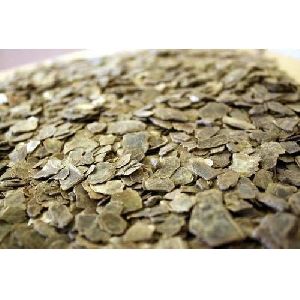
raw vermiculite mineral
7 Per Kilogram
500 Kilogram (MOQ)
Brand Name : AIM Vermi
Color : Rockish Brown (Golden after exfoliation)
Form : Lumps
...more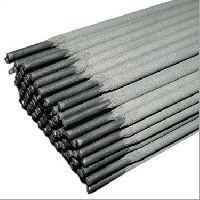
Ms Welding Electrodes
Welding electrodes are used in welding various metals in the fabrication of equipment for chemical & Allied industries, construction of steel structures such as bridges, factory sheds, in the manufacture of ships, Vehicles and engineering equipment. Mild steel is welded by electrodes to a maximum among all the metals & Alloys. Therefore M.S. Welding Electrode is the most widely used core wire. Besides this, special grade electrodes are being developed for specific applications. Welding electrodes comprise basically of steel core wire and coating ingredients or flux mild steel core wires are used in majority of unalloyed steel electrodes. Besides mild steel, nickel, Nickel-copper, Nickel irons are also used in MIG & TIG welding. Stainless steel wires are also used for welding in fertilizer, chemical & surgical instrument making industry. Coating ingredients are basically rutile, ilmenite, potassium silicate, sodium silicate and minerals like quartz, calcite, wollastonite and mica. Ferro alloys including ferro manganese powders (high carbon, low carbon, extra low carbon), ferro chrome (extra high carbon, high carbon, low carbon and extra low carbon), ferro silicon (atomized and stabilized), ferro titanium, ferro silico manganese are also used as welding fluxes and electrodes raw materials.
...more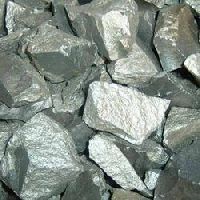
mc ferro manganese
Ferro Manganese Medium Carbon is widely demanded by Steel and Casting Industries. Ferro Manganese Medium Carbon helps to remove sulphur from steel and gives the malleability and machineability and durability. Ferro Manganese also helps in deoxidation of molten metal. The medium carbon ferro manganese is made by the aluminothermic process or by the MOR Process if furnace route is used.
...more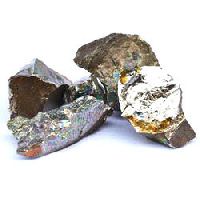
Manganese Metal
Manganese is a chemical element with symbol Mn and atomic number 25. Manganese is not found as a free element in nature; Manganese is often found in combination with iron, and in many minerals. Manganese is a metal with important industrial metal alloy uses, particularly in stainless steels. Manganese is a silvery-gray metal that resembles iron. Manganese is hard and very brittle, difficult to fuse, but easy to oxidize. Manganese is essential to iron and steel production by virtue of its sulfur-fixing, deoxidizing, and alloying properties. Steelmaking, including its iron making component, has accounted for most manganese demand, presently in the range of 85% to 90% of the total demand. Among a variety of other uses, manganese is a key component of low-cost stainless steel formulations.
...more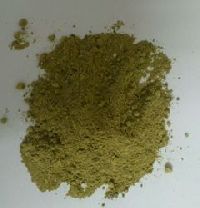
Magnesite Ramming Mass
Basic Ramming Mass is a magnesia based refractory lining material for induction furnaces. Basic Ramming Mass or Magnesia Ramming Mass is widely used in industries which work with high manganese steel and high chromium steel to make quality products. Basic Ramming Mass has much longer life span compared to acidic ramming mass or neutral ramming mass. The wide range of basic ramming masses are produced using a blend of indigenous Dead Burnt Magnesia and imported fusedsea water magnesia. Basic Ramming Masses find acceptance in coreless induction furnaces, EAF hearth, cold and hot steel launders.
...more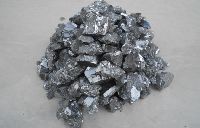
Low Carbon Ferro Chrome
Extra low carbon ferrochrome is used during steel production to correct chrome percentages, without causing undesirable variations in the carbon or trace element percentages. Extra Low Carbon ferro chrome is also a low cost alternative to metallic chrome for uses in super alloys and other special melting applications. Extra Low Carbon Ferro Chrome is limited by the carbon content of the alloy being not more than 0.03%. Extra Low Carbon Ferro Chrome is usually produced by the Perrin Process, Thermit Process or by the VIM Process.
...more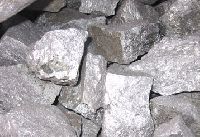
High Carbon Silico Manganese
Silicon manganese is a chemical compound made by mixing natural silicon with manganese, an element found naturally in the earth. When combined, these elements can be used to produce a number of specialty steel alloys. Silico manganese enhances the natural properties of steel, giving it increased strength and function, as well as improved aesthetic appeal. This means that silicon manganese alloys can be used in applications beyond those associated with standard steel products. Silicon manganese may also be known as ferro silico manganese or abbreviated as SiMn. Silico Manganese may be used alone, or combined with other substances to create various alloys. The ratio of silicon to manganese can also be adjusted to give steel the desired properties. Standard silicon manganese steel alloys contain 14 to 16 percent silicon, and as much as 68 percent manganese. They also include small amounts of carbon, which is required for the steel to undergo a chemical reactions with these compounds. In stainless or specialty steel products, the silicon content can be as high as 30 percent.
...more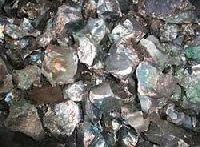
HC Ferro Manganese
Ferro Manganese High Carbon is an alloy of iron and manganese with high carbon contents, usually 6-8% ww. High carbon Ferro Manganese is usually produced in arc furnace from manganese ore and coke in specified ratios. The widespread shift toward duplex refining practices such as the AOD, CLU, etc., has led to greatly increased use of high-carbon ferromanganese. High Carbon Ferro Manganese is a bulk Ferro Alloy with India playing a vital role in its production. With the mentioned refining practices in use by stainless steel producers, this alloy has become their primary raw material as a source of manganese.
...more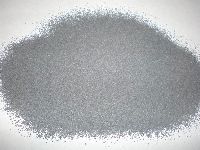
Ferro Titanium Powder
Ferro Titanium is used by stainless steel makers as a stabilizer to prevent chromium carbide forming at grain boundaries and in the production of low carbon steels for sheet production. Ferro Titanium is also used in foundries for addition of titanium to the molten metal imparting excellent strength to it without altering other ratios. Various titanium bearing materials are employed in making Ferro Titanium. Major sources include titanium scrap, titanium sponge, ilmenite, leucoxene, rutile. These materials are either reduced by aluminothermic means or melted in induction furnace with iron to produce ferro titanium of various grades and specifications. Various grades are manufactured, the most common being 20-25% Ti for foundries, 35-40% Ti for welding, 70% Ti for stainless steel production.
...more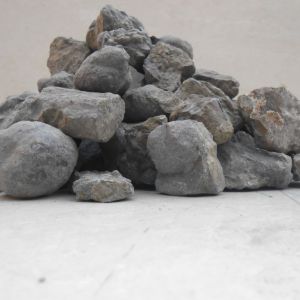
Ferro Sulphur
Ferro Sulphur, composed of iron and sulphur with a sulphur content ranging between 28% and 32%, with this content being what defines the quality of the product. There are typically two grades according to its sulphur content, between 28% and 32% and between 48% and 50%. Ferro Sulphur is used in metallurgy give the steel or alloy the desired sulphur content. It is used for this purpose instead of elemental sulphur because the low melting point of the sulphur could accumulate on the molten metal surface, causing SO2 emissions and also a deterioration of its mechanical properties by the formation of a low eutectic melting point in the grain boundaries.
...moreFerro Calcium Silicon
Calcium-Silicon alloys are used as deoxidizer and desulfurizer in the manufacturing of high grade steel. Indeed, Calcium and Silicon both have a strong chemical affinity for oxygen. Especially calcium, have a strong chemical affinity not only for oxygen, but also for sulphur and nitrogen. The steel industry accounts for around 90 % of global Calcium Silicon consumption. Ferro Calcium Silicon alloy is also used for the modification of non-metallic inclusions. Calcium Silicon is used to control the shape, size and distribution of oxide and sulfide inclusions improving fluidity, machinability, ductility, and impact properties of the steel product. The calcium liquefies the suspended solid inclusions of aluminium oxide, a principal source of fatigue failure in highly stressed alloy steels, that are always present in aluminium killed steels (Al203 is transformed by Ca into CaO:Al2O3). Furthermore, the material properties of steel are improved: the calcium aluminates formed are largely undeformable in the solidified steel and allow high isotropy of the material properties to be maintained after working of the steel. As a sulphide former, Calcium Silicon alloy promotes random distribution of sulfides, thereby minimizing chain-type inclusions.
...more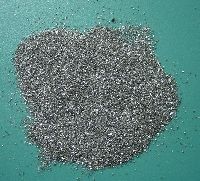
Chromium Metal Powder
Chromium is a chemical element with symbol Cr and atomic number 24. Chromium is the first element in Group 6. Chromium is a steely-gray, lustrous, hard and brittle metal which takes a high polish, resists tarnishing, and has a high melting point. Chromium metal is commercially produced from chromite by aluminothermic reaction, or by roasting and leaching processes. Chromium metal has proven of high value due to its high corrosion resistance and hardness. A major development was the discovery that steel could be made highly resistant to corrosion and discoloration by adding metallic chromium to form stainless steel. This application, along with chrome plating (electroplating with chromium) currently comprise 85% of the commercial use for the element, with applications for chromium compounds forming the remainder.
...more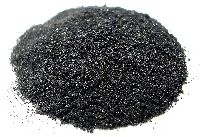
Atomized Iron Powder
Commercial iron powders are classified in three types, reduced iron powder, atomized iron powder, and electrolytic iron powder, depending on the production method, and are used in various applications, taking advantage of their respective properties.
...more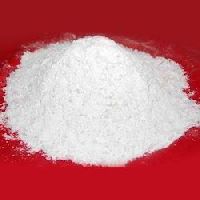
Acidic Ramming Mass
Silica ramming mass is also known as acidic Ramming Mass, is used in lining of Coreless Induction Furnaces, for melting of scrap .They find their vast usage in various industries. We bring superior quality silica ramming mass which is acidic in nature having the melting point 3274 F. Lining is an important part of induction furnace and furnace performance is directly related to the lining performance. We source it from the experienced manufacturers across India to ensure iron free material and to assure proper composition of granules according to furnace capacity. The granulations of the mix are optimized keeping in view the furnace make and capacity, thus giving maximum and best results. It is characterized by thermal stability, corrosion resistance and wears resistance because it contains less binders, fire clay and moisture compared to plastic refractories.
...more
Ferro Alloys
We deal in almost all kinds of ferro alloys available in the market. 1. Ferro Manganese 2. Ferro Chrome 3. Ferro Boron 4. Ferro Phosphorus 5. Ferro Titanium 6. Ferro Aluminum 7. Ferro Molybdenum 8. Ferro Titanium 9. Silico Manganese
...more
Nickel Metal
Plates for Foundry Industry Powder (60 – 100 MESH) for Welding Industry Powder (Below 100 MESH) for Powder Metallurgy
...more
chromium metal
Flakes for Foundry Industry Powder (60 – 100 MESH) for Welding Industry Powder (Below 100 MESH) for Powder Metallurgy
...more
copper metal
Powder (60 – 100 MESH) for Welding Industry Powder (Below 100 MESH) for Powder Metallurgy
...more
aluminium metal
Notch Bars for Melting Powder (60 – 100 MESH) for Welding Industry
...more
Iron Metal Powder
Powder (80 – 100 mesh) cutting grade powder (60 – 100 mesh) welding grade powder (below 100 mesh) powder metallurgy grade powder for diamond tools industry electrolytic iron powder.
...more
Refractories
We keep stocks of a very few products in this category. However you can enquire us about any of your refractory needs and we will definitely help you source them from the most reliable vendors in the industry across India. 1. Basic Ramming Mass (Magnesia Base) for Induction Furnaces 2. Acidic Ramming Mass (Silica Base) 3. Back Filling Mass 4. Magnesite 5. Olivine Sand for Green Sand Casting
...more
Ferro Boron
Ferro Boron is an alloy, which is formed by combining iron and boron. Ferro Boron will typically be added to steel to form a very strong, highly durable and specialist steel for use across a variety of applications. Although the uses of Ferro Boron as a steel additive are limited due to the relative high cost of production, it is still considered to be one of the most useful ferro alloys.
...moreBe first to Rate
Rate This